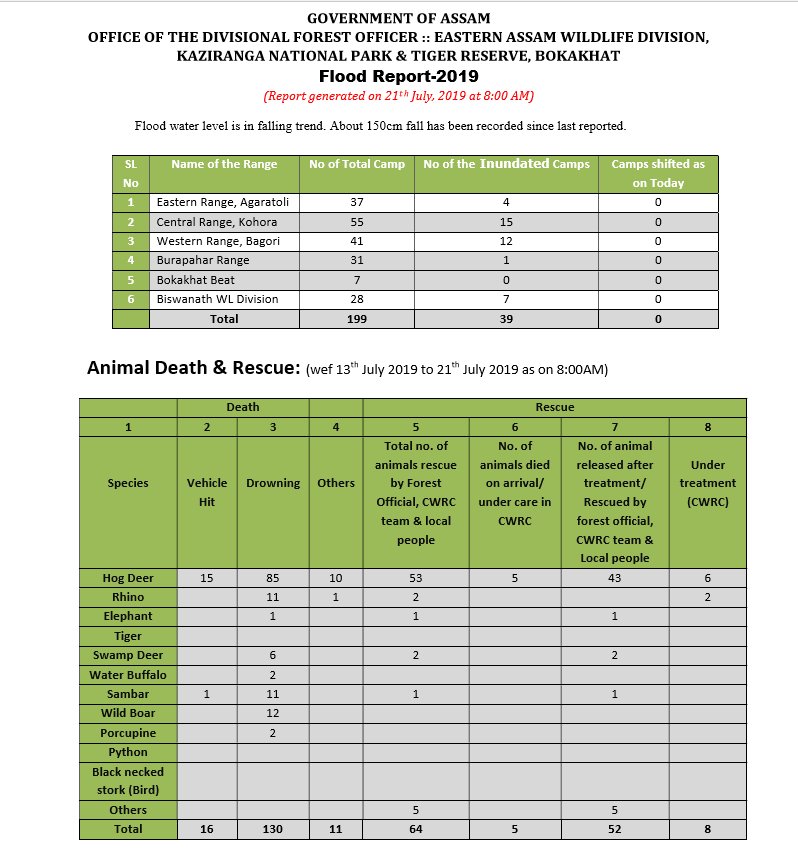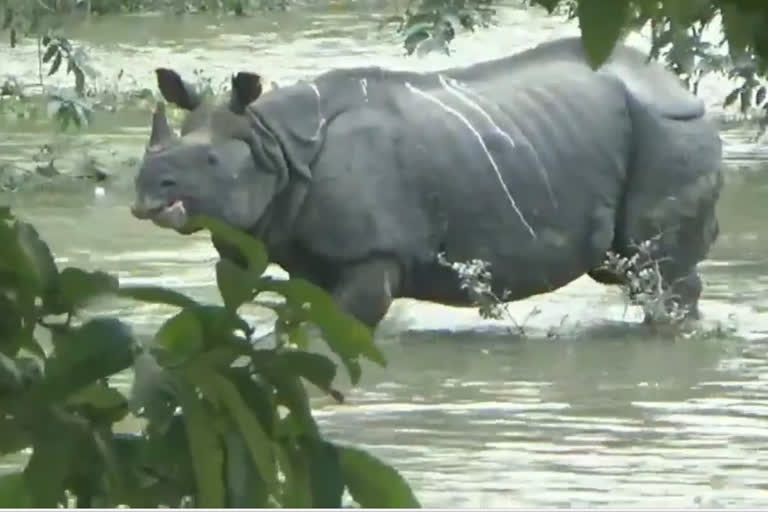Assam: Even as floodwaters are slowly receding in Assam, large parts of Pobitora Wildlife Sanctuary, among other national parks and wildlife sanctuaries in the state, continues to remain submerged. The deluge is forcing the wildlife to take refuge in artificial highlands constructed within the parks or migrate to the southern highlands of Karbi Anglong hills.
Meanwhile, a statement released on Sunday by the Divisional Forest Officer of Kaziranga National Park - which has the world's largest population of one-horned rhinoceros- stated that the flood water level in the famed park has recorded a drop of 138 cm.

The calamity has claimed the lives of 162 animals in Kaziranga National Park, including 12 rhinos, 115 hog deers, 12 sambhar deers and an equal number of wild boars, six swamp deers, two porcupines, two elephants, and two water buffaloes since July 13, the statement read further.
While some of the animals perished in the floods, others were hit by vehicles while crossing the adjacent national highway 37 in an attempt to reach highland in nearby Karbi Anglong district.
A flood bulletin issued by the Assam State Disaster Management Authority (ASDMA) said that as many as five deaths were reported from Morigaon district, three from Barpeta, two from South Salmara and one each from Nalbari and Dhubri districts on Saturday, taking the total death toll to 59.
The bulletin further stated that nearly 3,024 villages in the affected districts continued to remain underwater and as many as 44,08,142 people have been hit in the districts of Dhemaji, Lakhimpur, Biswanath, Sonitpur, Darrang, Barpeta, Nalbari, Chirang, Bongaigaon, Kokrajhar, Dhubri, South Salmara, Goalpara, Kamrup, Kamrup (Metro), Morigaon, Nagaon, Karbi Anglong, Golaghat, Jorhat, Dibrugarh, Tinsukia, Cachar and Karimganj districts.
The districts, where floodwater levels have declined slightly, the displaced people are slowly returning to their homes.
However, over 1.32 lakh displaced people are still languishing in 689 relief camps and 240 relief distribution centres set up by the district administrations.
Also read: 102 deaths reported due to Japanese Encephalitis in Assam
Meanwhile, the Brahmaputra river continues to flow above the danger level at Neamatighat in Jorhat district, Goalpara, Dhubri, Dhansiri at Numaligarh in Golaghat district and Kopili at Dharamtul in Nagaon district.



